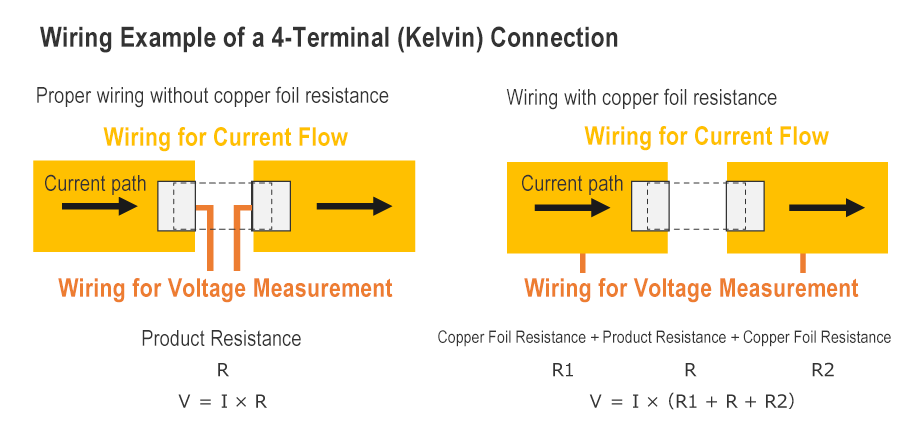Precautions When Using Chip Resistors
Effects of Board Design on TCR (Shunt Resistors)
Why is 4-terminal measurement necessary?
Shunt resistors detect current value by reading both the potential (voltage) difference between the electrodes generated by the resistance value and current flowing through the resistor using an LSI.
Two-terminal and four-terminal (Kelvin) connections are available for measuring the potential difference between electrodes.
In the case of the 2-terminal connection, since the resistance component of the solder is a source of error, it is common to measure using a 4-terminal (Kelvin) connection with separate current and voltage wiring.
Increasing the resistance value of the shunt resistor increases the potential difference between the electrodes, but as more heat is generated in proportion to the resistance value, the lowest possible resistance value is normally selected.
However, the lower the resistance value the more the resistance components of the copper foil and solder must be taken into account as error factors. (Refer to the figure at right below)
Therefore, when using a 4-wire (Kelvin) connection with separate wiring for current flow and voltage measurement, it is possible to measure the potential (voltage) difference between electrodes with higher accuracy (see figure at left below) by eliminating the effects of copper foil resistance.

Factors that Affect TCR
When using shunt resistors, resistance value, power rating, and size are important considerations, but tolerances must also be considered as they can affect the accuracy of voltage being detected.
These include the resistance tolerance at room temperature (±1% for F Class products) and TCR (Temperature Coefficient of Resistance).
TCR, which refers to the change in resistance value due to a change in temperature, is expressed in ppm/℃.
This is an important factor for accurately detecting the current value, since the temperature rise of the resistor due to power consumption when current flows along with changes in ambient temperature can cause the resistance value to fluctuate.
There are four main factors that affect TCR.




